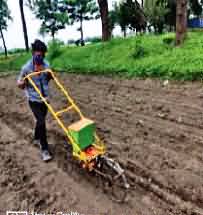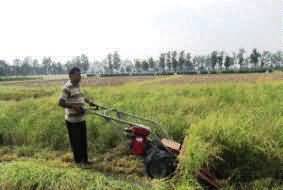It is thought that the Millets have existed for roughly 7,000 years. They are predominantly grown in Asia and Africa, with Nigeria, China, Niger, and India being the top producers. In 2022, 39% of the world's total millets were produced in India. Although these grains are grown in at least 130 nations, the dominance of rice and wheat has often sent them to the sidelines. Recently, the government renamed it to Shree Ann to draw attention to them.
Compared to their more well-known counterparts, millets have a number of benefits. It is tolerant to climate change and can grow in arid areas with fewer inputs. They are inexpensive but a great source of fibre, antioxidants, minerals, proteins, and iron, and they are naturally gluten-free. For anyone with celiac disease, gluten intolerance, high blood sugar, or diabetes, millet is a great meal alternative. It is great since it can improve the health of those who are overweight and undernourished alike. It keeps both human and soil health in order. Also it, provides answers to personal and global health issues. Although it has great potential, growing it and expanding its consumer base present numerous difficulties.
Issues and challenges:
One of the main issues is the loss of millet cultivation areas due to the conversion of millet-growing fields to more lucrative crops. Several elements contribute to millet cultivation restrictions; like lack of awareness, weed infestation, labour intensive crops, limited research and many more. The researchers have put considerable efforts to make its cultivation easy and solve several challenges. In millet cultivation higher demand and drudgery of women in production and post-harvest processing, lower profitability of millets compared to alternative crops, difficulty in preparation of food items, appearance and palatability of millets products are reasons for neglecting them in farming as well as its use as food.
Since millets vary in size and shape, different machinery are required for different operations like seed bed preparation, planting, inter-culture operation, harvesting, threshing and post- harvest operation. ICAR-CIAE, Bhopal has developed a range of manual, animal, power and tractor operated machinery to reduce drudgery and improve the production of millets, to cater to a wide group of farmers.
Mitigation of drudgery:
According to Israel Oliver King, E. D. (2016), the participation of women in millet production is highest in mechanical and hand weeding (70 & 62%), harvesting (46%) and seed treatment (42%). It is lowest in land preparation (16%), transportation and application of manure (19%).
Seed bed preparation machineries such as Bullock drawn Improved plough, Bullock drawn Improved blade harrow, Power tiller, Sweep type cultivator with clod crusher and leveller, Rotavator attached with power tiller etc can be used for proper seed bed preparation.
In sowing operation, women are strained to place the seeds in bending posture. So by introducing row marker labour time/strain can be reduced. Inter cultivation require more time and energy of women. By using inter-cultivation hoe and variable size spades time of operation can be decreased. Weeding is done manually by women in squatting posture, which is strenuous. Star weeder can be used to reduce time and labour
Planting machineries like Manual drawn single/three row multi-millet seed cum fertilizer planters, Bullock drawn three row multi-millet seed cum fertilizer planters and Tractor/power tiller drawn six row multi-millet seed cum fertilizer planter can be employed for successful crop establishment.

Fig Improved seeding machinery
Mechanical weeding has increased the yield of field crops over hand weeding. Rotary power weeder works better in respect of average working depth than bullock-drawn blade weeders. Various types of manual twin-wheel hoes, animal-drawn hoes and power operated weeders can be used in millet crops.

Fig. Mechanical Harvesters
About 80-100 man-h/ ha are required for manual harvesting. For harvesting operation different machineries like improved sickle, vertical conveyor reaper and reaper binder can be used. It helps in the reduction of cost per unit area besides saving time. A millet harvester developed by improvising paddy vertical conveyor reaper to harvest barnyard millet, kodo millet, proso millet, little millet and foxtail millet saves 81-89% labours and improves comfort in millet harvesting.
Multi-millet thresher developed by ICAR-CIAE can be used for threshing of the crop to achieve a better quality of the grains. A multi-millet thresher was designed and developed for the threshing of the millets based on the different properties of the minor millets. The developed machine works on the principle of impact and shear on the ear head of the crop for the threshing of millets. Decorticator and Dehusking Machines helps in dehusking operation and mechanical pearlers and millet mills facilitates pearling operation.
Post harvest processing of Italian and Little millets done manually by separating the stones, then by hand pounding and winnowing. Processing equipment including destoner, grader for cleaning, emery mill and roller dehusking can be used to reduce the drudgery in post harvest processing. Post harvest processing of Finger millet done manually by separating the stones, then by hand grinding in stone mortar and winnowing. Processing equipment including destoner, grader for cleaning, and pulveriser can be used.
Hence it can be concluded that with introduction of machinery to reduce time and labour we can encourage the farmers to take up millet cultivation.
References:
- Israel Oliver King, E. D. (2016).” Impact of Reduced drudgery of women in production and post- ‐ harvest processing of small millets”. MSSRF working Paper No.09. Chennai : M S Swaminathan Research foundation.
- Jha, S. N. 2023. Millets (Shree Ann): A Wonderful Food Engineers making cultivation and Value Addition Easy. Engineering for the golden grain. Agricultural Engineering Today. ISSN (Online): 2230-7265. Vol. 47, No. 1 .January - March 2023.
- Nandede, B. M. 2023. Package of machinery for millet production agriculture. Engineering for the golden grain. Agricultural Engineering Today. ISSN (Online): 2230-7265. Vol. 47, No. 1 .January - March 2023.
- Sandhu, J. S. 2023. Innovations and Technology in Millet Farming. Engineering for the golden grain. Agricultural Engineering Today. ISSN (Online): 2230-7265. Vol. 47, No. 1 .January - March 2023.
Authors:
Mhatre C. S1 and Monalisa Pati2
1 Scientis & 2 SRF, ICAR-Central Institute for Women in Agriculture
Email:
